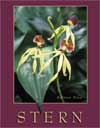1. McClintock's work with corn changed beliefs about genes and chromosomes. 2. A DNA molecule consists of nucleotides. A typically single-stranded
RNA molecule has a different sugar, and uracil instead of thymine. 3. Watson, Crick and Wilkins developed a model of a DNA molecule, now
considered authentic. It is a double-stranded helix resembling a spirally twisted
ladder. 4. DNA stores genetic information, replicates itself, expresses its
information, and can mutate. 5. A genome is the sum total of the information in an organism's DNA. 6. A DNA molecule replicates by "unzipping;" the resulting single strands
serve as templates for two double-stranded molecules. 7. With DNA as a template, mRNA, tRNA, and rRNA are made during transcription. 8. During translation mRNA from transcription is used to make proteins;
tRNA decodes mRNA information. Ribosomes are made of rRNA and proteins. 9. Spontaneous or induced mutations are changes in DNA sequence. 10. Inversions and translocations may be important speciation mechanisms. 11. An aneuploid has a normal chromosome number plus or minus one to several
chromosomes. A polyploid has extra complete sets of chromosomes. 12. Gregor Mendel originated the science of genetics while experimenting
with peas. The pea varieties he crossed had pairs of contrasting characteristics
on homologous chromosomes. Parent plant offspring were called the F1 generation;
the F2 generation resulted from F1 plant crosses. F1 plants, called hybrids,
all resembled their parents. F2 offspring were produced in a 3:1 ratio of plants
resembling one or the other parent. 13. The agents controlling the plants' characteristics were called "factors;"
Mendel deduced that each plant had two factors (later known as alleles) for
each characteristic. His law of unit characters states that "factors, which
always occur in pairs, control the inheritance of various characteristics."
The suppressing factor was called dominant and its counterpart recessive. 14. Phenotypes (described with words) denote appearance; genotypes (shown
with letters) designate genetic makeup. Capital letters designate dominant alleles;
lower case letters designate recessive alleles. 15. Paired homozygous plant alleles are identical. Paired heterozygous plant
alleles are contrasting. 16. Monohybrid cross offspring are produced in a ratio of 3 dominant phenotypes
to 1 recessive phenotype. Dihybrid crosses produce a 9:3:3:1 phenotypic ratio.
A backcross between an F1 hybrid and its recessive parent produces a phenotypic
ratio of 1:1 (monohybrid) or 1:1:1:1 (dihybrid). 17. Compared to homozygotes the heterozygotes are intermediate when dominance
is incomplete. 18. Enzymes control biochemical reactions. Genotypes control phenotypes.
19. Quantitative trait genotypes are strongly influenced by environment. 20. Linked genes are inherited together. Bateson and Punnett observed a
7:1:1:7 ratio in a dihybrid cross, and postulated it resulted from linkage and
crossing-over. 21. Chromosomal mapping requires calculating crossover percentages to determine
the positions of genes on chromosomes. 22. The Hardy-Weinberg law explains why recessives in a population do not
disappear. Selection is the most significant cause for 7 exceptions to the Hardy-Weinberg
law. | 


 2003 McGraw-Hill Higher Education
2003 McGraw-Hill Higher Education

 2003 McGraw-Hill Higher Education
2003 McGraw-Hill Higher Education